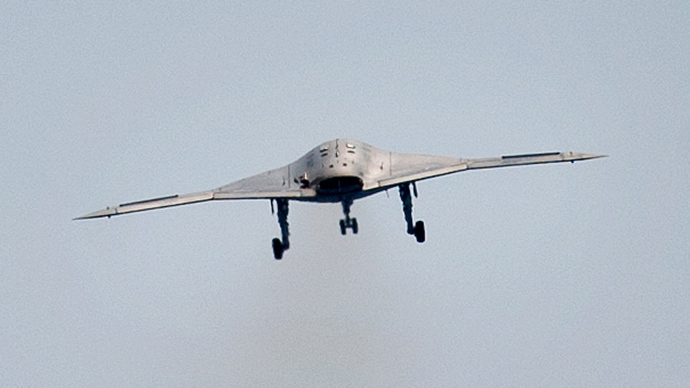Al-Qaeda working to defeat US drones since 2010 - report

For the past three years, Al-Qaeda has sought to hire engineers and other experts to help the terrorist organization fend off US drone strikes that have increasingly hobbled the militant network, according to documents leaked by Edward Snowden.
Drone warfare throughout Yemen and Pakistan has pushed remaining Al-Qaeda leaders into secluded areas of the Middle East. From there, they have attempted to shoot down, hijack, or otherwise incapacitate drones with help from operatives with backgrounds in science or mechanics.
The revelations are included in a top-secret report titled “Threats to Unmanned Aerial Vehicles,” disclosed to The Washington Post by former National Security agency contractor Edward Snowden and first published on Tuesday. The document chronicles a summary of intelligence assessments collected by American spy agencies since 2006.
In July 2010, the Defense Intelligence Agency (DIA), a US spy agency, discovered digital communication from top Al-Qaeda leaders revealing that the terrorist network assembled a “strategy guide” that explained how “to anticipate and defeat” drones to militants around the world.
The manual made it clear that radical Islamists had invested in technology that would have scrambled a drone’s GPS signal and infrared tags, thereby eliminating the aircraft’s capability to accurately hit a target. US officials acknowledged the technology’s satellite vulnerability as early as 2011, when a declassified document warned of “increasingly capable adversaries.”
Militants have also employed small radio-controlled hobby planes and observation balloons in an effort to decipher drones’ flight paths, according to The Post.
DIA analysts wrote that Al-Qaeda operatives in Pakistan were “determining the practical application of technologies being developed for battlefield applications” while “cell leadership is tracking the progress of each project and can redirect components from one project to another.”
A 2010 report from the CIA described how Al-Qaeda recruiters no longer preferred “ordinary fighters,” instead opting for “specialist staff” who were familiar with missile technology. In March of this year the English-language magazine Azan, which is sympathetic to Al-Qaeda, included seeking technological advice.
“Any opinions, thoughts, idea and practical implementations to defeat this drone technology must be communicated to us as early as possible because these would aid greatly…against the crusader-zionist enemy,” the text read, as quoted by The Post.
Nothing in the new disclosure indicates that Al-Qaeda has successfully brought down a drone, but the organization’s attempts to develop laser detectors – and potentially cloud a drone’s location or vision capabilities – have alarmed US analysts. In 2009, Iraqi insurgents proved their ability to hack a drone’s video feed and monitor its flight path.
The DIA noted in 2011 that an “Al-Qaeda-affiliated research and development cell currently lacks the technical knowledge to successfully integrate and deploy counter-drone strike systems.” However, if engineers could suddenly “overcome these substantial design challenges, we believe such a system probably would be highly disruptive for US operations in Afghanistan and Pakistan.”
The drone program has become one of the benchmarks of the US counter-terror policy. Each unmanned aircraft is equipped with a camera that allows the pilot - from a military base in the United States - to spend weeks monitoring a region where a target is thought to be hiding.
When an Al-Qaeda fugitive has been positively identified, often while driving in a vehicle, a US commander approves the strike, allowing the pilot to remotely shoot a missile from the drone and incinerate the target.
This method has proved successful at hunting suspected terrorists hiding in locations unreachable to US troops, but is thought to have killed thousands of civilians throughout the Middle East.
While officials refuse to acknowledge specific numbers or events, the attacks have contributed to deep anti-American sentiment, particularly in Pakistan, where USA Today estimated that strikes have eliminated approximately 2,505 to 3,584 terror suspects and 407 to 928 civilians.
Cognizant of the growing unease, intelligence agencies have suggested that “drone strike” never be used to describe an attack from an unmanned aircraft, saying it is “a loaded term.”
“Drones connote mindless automatons with no capability for independent thought or action,” the report stated. “Strike connotes a first attack, which leaves the victim unable to respond. Other phrases employed to evoke an emotional response include ‘Kill List,’ ‘Hit Squads,’ ‘Robot Warfare,’ or ‘Aerial Assassins.’”














